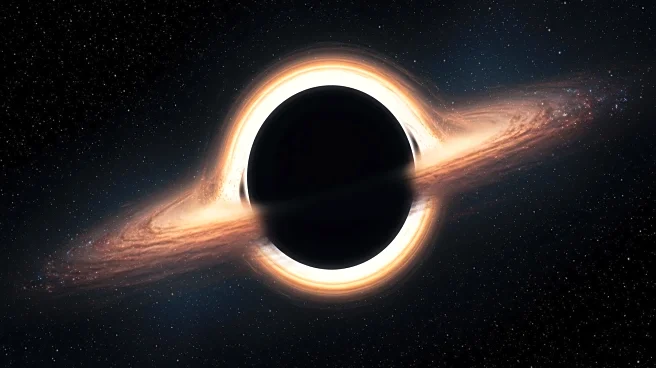What is the story about?
What's Happening?
A black hole weighing 36 billion solar masses has been discovered at the center of the cosmic horseshoe galaxy, located approximately 5 billion light-years away. This measurement, achieved through gravitational lensing, marks the heaviest black hole ever measured with such precision. The discovery challenges existing theories about the formation and growth of supermassive black holes, suggesting that black holes may have formed before the stars in their host galaxies. This finding raises questions about the 'chicken-and-egg' scenario in cosmology, regarding whether stars or black holes formed first.
Why It's Important?
The discovery of such a massive black hole has significant implications for our understanding of galaxy formation and evolution. It suggests that black holes may have played a more central role in the early universe than previously thought. This could lead to a reevaluation of the processes that govern the growth of galaxies and their central black holes. The findings also highlight the importance of gravitational lensing as a tool for studying distant cosmic phenomena, potentially opening new avenues for research in cosmology.
Beyond the Headlines
The discovery of this overmassive black hole suggests that black holes may have originated from massive seeds, challenging the traditional view that they formed from the remnants of the first stars. This could imply that black holes and galaxies coevolved, with black holes playing a more significant role in shaping the universe. Future observations and studies, particularly with advanced telescopes like the JWST, may provide further insights into this cosmic mystery.
AI Generated Content
Do you find this article useful?











